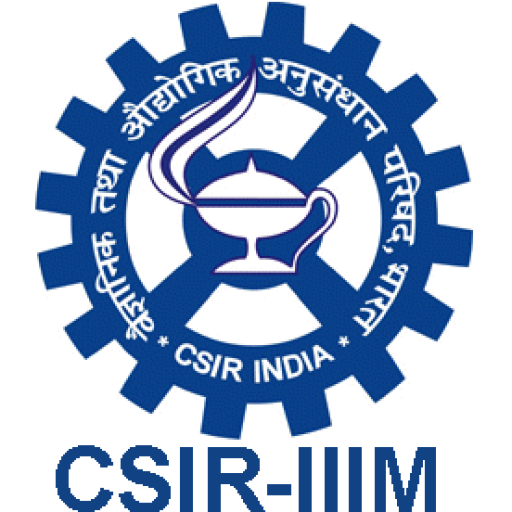Central Instrumentation Facility (CIF)
Overview
Central Instrumentation Facility (CIF): Spectrometry, chromatography and microscopy form the three major units of the division which help in structure elucidation and characterization of various compounds of natural as well as synthetic origins. The Division is equipped with state of the art analytical facility consisting of NMR, HRMS, LCMS, GCMS, HPLC, FTIR, CDS, CHNS, SEM & TEM, besides many other commonly used scientific equipment. Major S&T data of the Institute is generated in this division. Besides catering to requirements of scientists and students of IIIM, CIF also provides services to national academia, research organizations and industry on chargeable basis. The Central Instrumentation Facility forms the backbone of the analytical services to research scientists for identification, qualitative & quantitative analyses of various compounds.
Following are the details of available analytical tools:-
Shimadzu GCMS-TQ 8040 NX
Configuration:
- Split/Splitless injector
- MS/MS detector
- Autosampler for liquid & HSS sampling
- NIST 17 Library
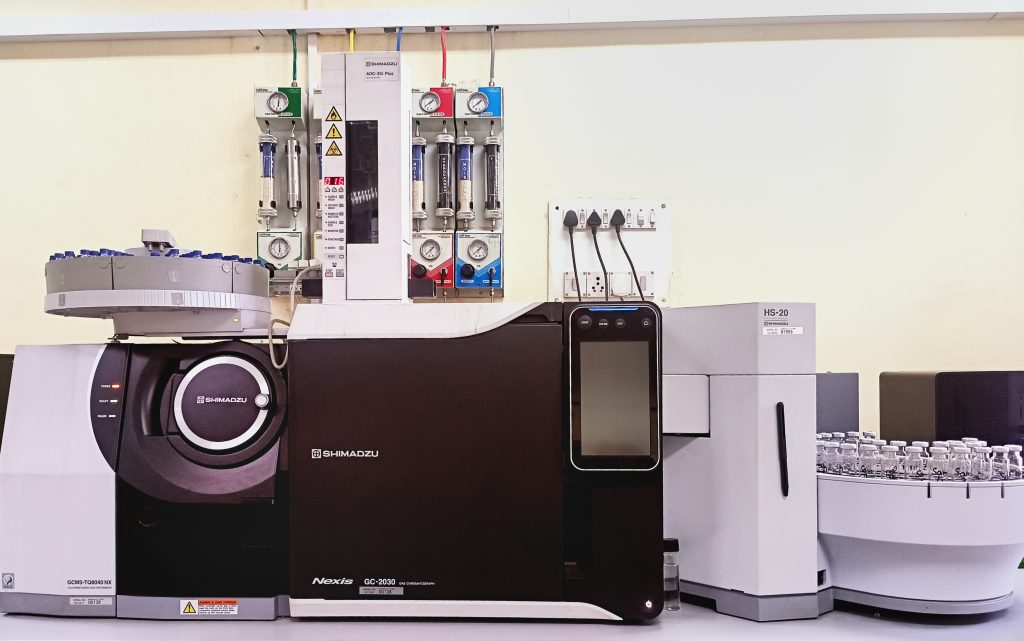
- Shimadzu LCMS-8030
- LC:
- Quaternary Gradient pump with on-line degasser
- Autosampler with capacity of 100 samples
- Column oven
- PDA detector
- MS:
- Sample inlet systems: Liquid chromatographic system and syringe pump inlets
- Ionization sources: ESI with both positive and negative ionization.
- The instrument is used for the mass determination of pure molecules and LC-MS studies provide information about the number of molecules and their atomic masses present in the mixtures. The instrument is used both for qualitative as well as quantitative analysis
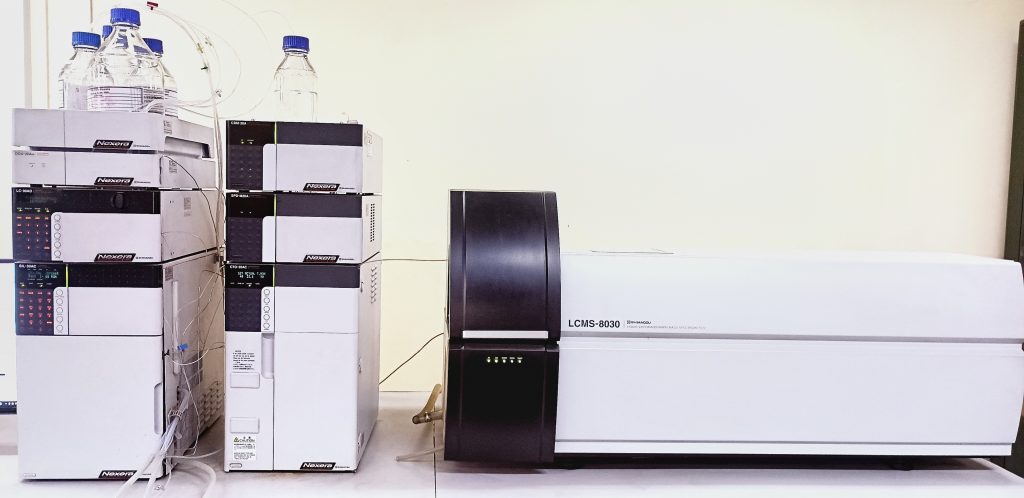
- Waters – Acquity H Class UPLC with Xevo G2-XS QTOF mass spectrometry.
- The instrument is used for the mass determination of pure molecules and LC-MS studies provide information about the number of molecules and their atomic masses present in the mixtures. The instrument is used both for qualitative as well as quantitative analysis.
- Instrument is used for the determination of both small as well as high molecular weight compounds. Metabolic studies of drug molecules would be carried out on the instrument.
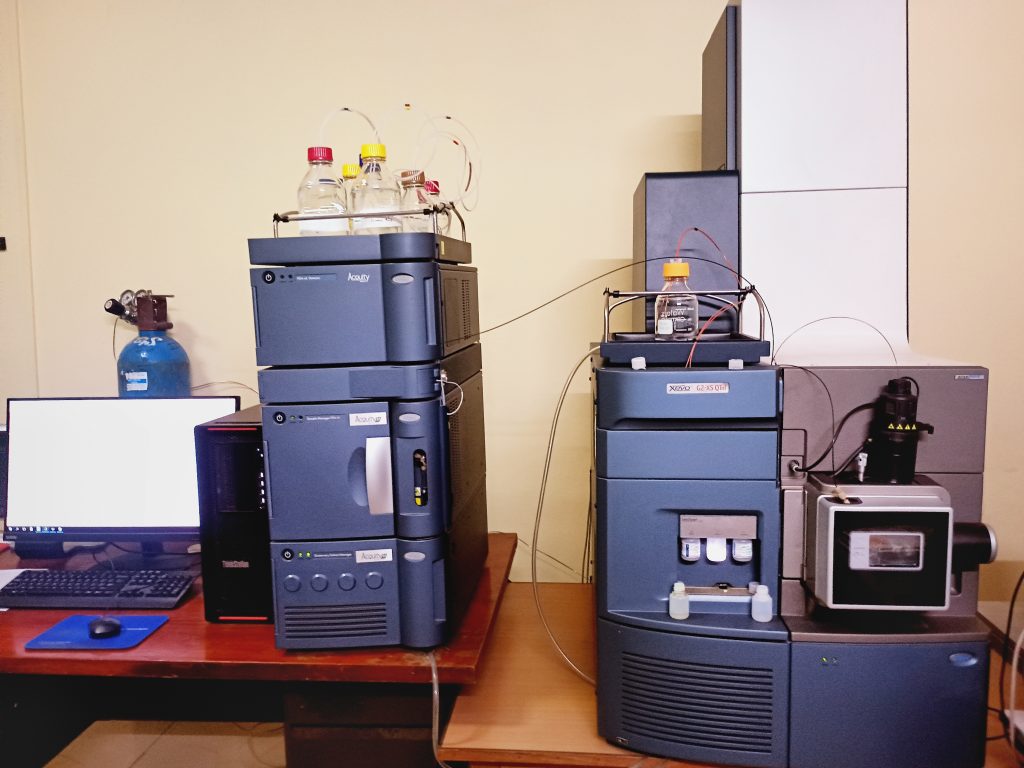
Analytical HPLCs of various makes are being used routinely for qualitative & quantitative analysis of natural products. Following are the details.
- Shimadzu make HPLC consisting of Quaternary pumps LC-20 AD, CTO-10Asvp column oven, SIL –20 AHT autosampler, SPD-M 20A PDA detector, RID-10A refractive index detector and SCL-10Avp communication module. The instrument works on Lab solutions software.
- Agilent 1260 infinity series HPLC consisting of quaternary pump and PDA detector.
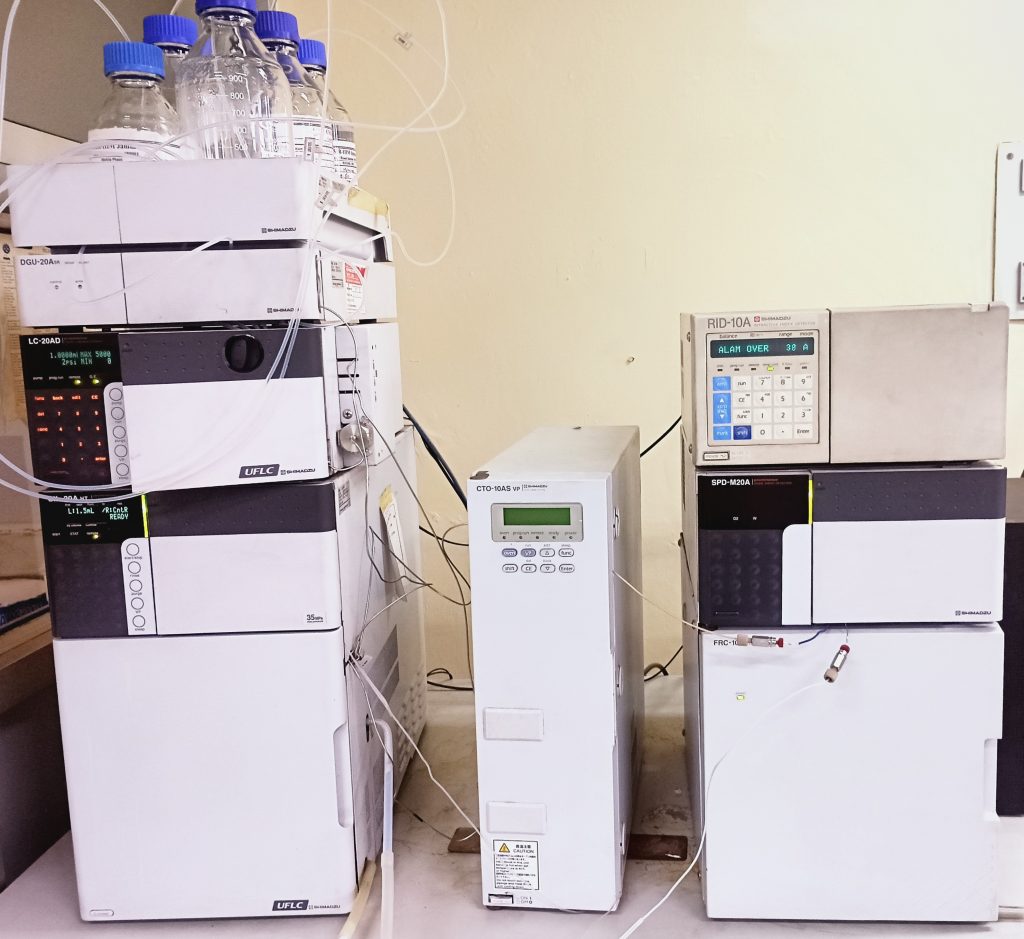
The instrument gives the percentage of carbon, hydrogen, nitrogen, oxygen & sulphur in the sample. The instrument utilizes the technique of catalytic tube combustion of the weighed sample. The separation of the gases formed is done utilizing adsorption technique on different columns, which are finally detected by thermal conductivity detector. The weight of the sample to be analysed should be in the range of 0.2mg to 200mg. Following are the dynamic working ranges of the instrument.
- C: 0.03 – 20mg
- H: 0.033mg
- N: 0.033mg
- S: 0.036mg
- O: 0.032mg
Perkin Elmer make FT-IR spectrophotometer model Spectrum Two.
Wave number range: 400-4000 cm-1
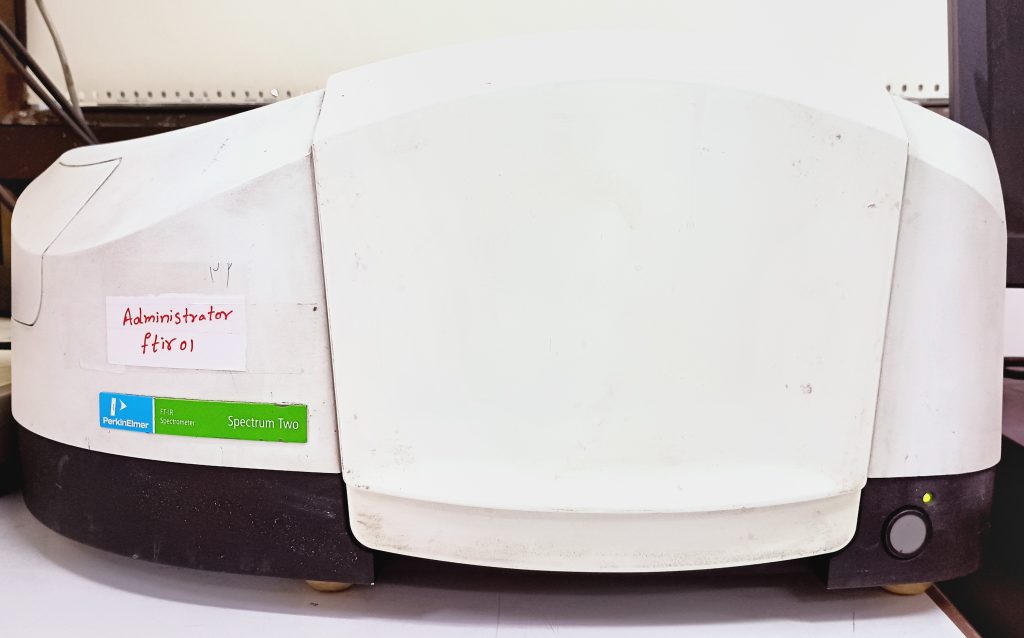
Overview
Nuclear magnetic resonance (NMR) spectroscopy experiments that are used to elucidate the molecular structures of natural products are based on the application of pulse sequences precisely timed radio-frequency and magnetic-field gradient pulses (usually on the microsecond and millisecond timescale) that are designed to excite the atomic nuclei of molecules and thereby produce diagnostic signals that can be analyzed to determine the connectivity of the 1H, 13C nuclei of the molecule. Two-dimensional techniques are used to determine the structure of complicated molecules.
Model Avance ultrashield 400 Brucker, Switzerland.
Operational aspects
(i) 5mm probe with Z-gradient coil with auto tune and matching (1H,19F,13C,31p)
(ii) Multi dimentional NMR capabilities in liquids
(iii) Fast state of Art workstation with topsin software.
(iv) Multiuser login system
Special provisions
(i) Gradient with need shimming capabilities
(ii)Suppression of water signals in aqueous solutions.
(iii)Modern two dimentional NMR techniques HSQC, HMBC along with DOSY experiment capabilities
Accuracy limit
(i) 1H Sensitivity in BBO probe 333:1, line shape 2.0/ 4.4 Resolution 0.3 Hz
13C Sensitivity 179:1, lineshape 1.1/ 2.5 Resolution 0.14Hz
Applications For elucidation of complex molecular structure and structural determination of natural products implementation of new pulse sequences, Measurement of self diffusion coefficient in solution and DOSY experiments.
Location Instrumentation. Division
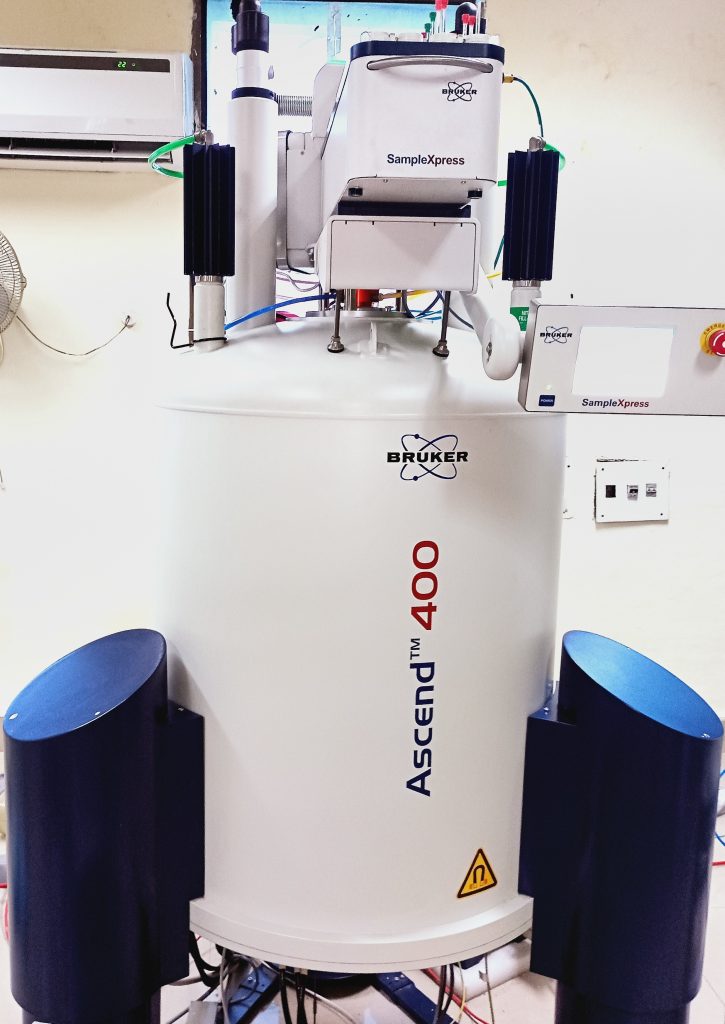
Overview
A compound Liquid Nitrogen Plant Philips make Stirlin-1 which has a production capacity of 07 liter/hour nitrogenium make which has production capacity of 10 liter/hour is available in the Institute. It is the most modern plant which is fully automatic and works on pressure swing absorption principle. These instruments can run continuously for 5000 hrs at a stretch.
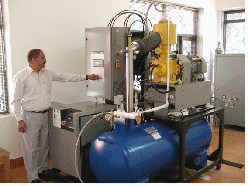
Circular Dichroism (CD) Spectroscopy
- Circular Dichroism (CD) Spectroscopy is used to determine the optical isomerism and
secondary structure of molecules. - The CIF has a J-1500 CD spectrometer from JASCO, with a Peltier temperature controller, a
single cuvette holder, and Spectral Manager 2 software for data collection and analysis.
Applications:
- Characterization of protein secondary structure and folded state
- Far-UV CD spectra (185-260 nm) for secondary structure
- Near-UV spectra (>250 nm) for tertiary structure fingerprint
- Detection of structural changes due to mutagenesis
- Protein unfolding
- Conformational stability in response to changes in:
- Temperature (Tm)
- Denaturant concentration
- Buffer composition, pH
Key Features
- CD scans are easy, rapid, and non-destructive (~10 min/sample)
- Lable-free
- Variable wavelength and variable temperature measurements
- Wavelength range: 190-900 nm
- Peltier Temperature control: 4°C – 95°C
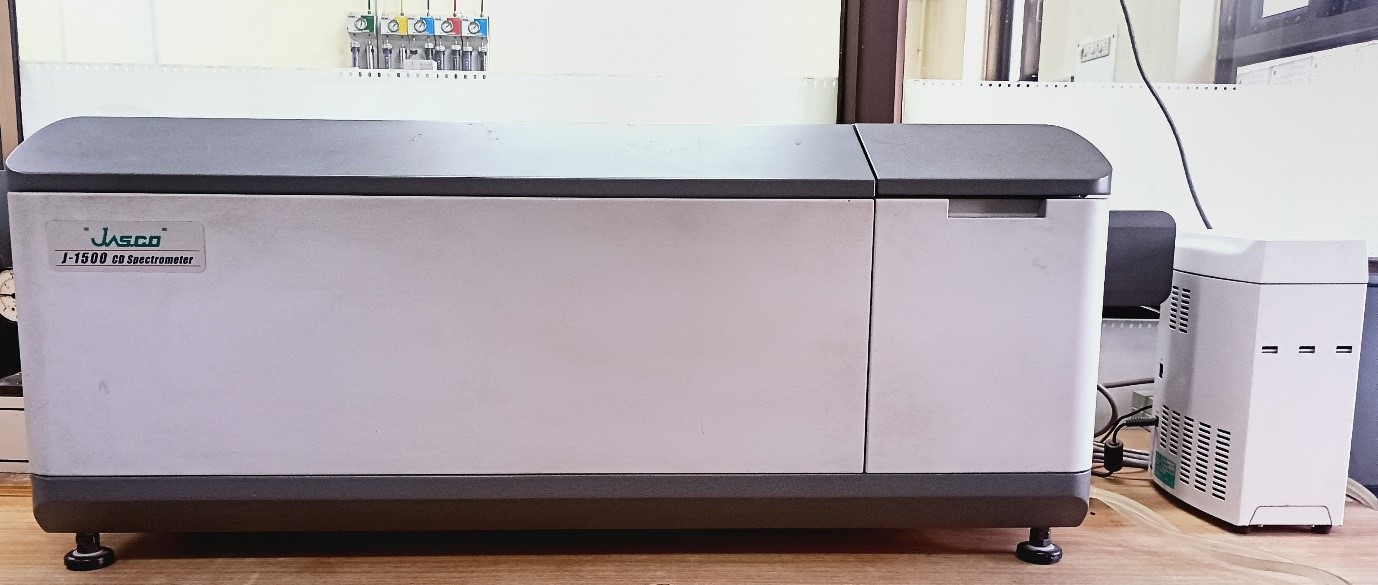
Instrumentation Division also caters to external agencies like industries, educational institutes, research institutes etc. The samples from these organisations are analysed on chargeable basis. Following persons can be contacted for utilising these services.
Contact
Dr. Raj Kishor Rai – Head QMI Division
Email: qmi[dot]iiim[at]iiim[dot]res[dot]in
 Screen Reader Access
Screen Reader Access
